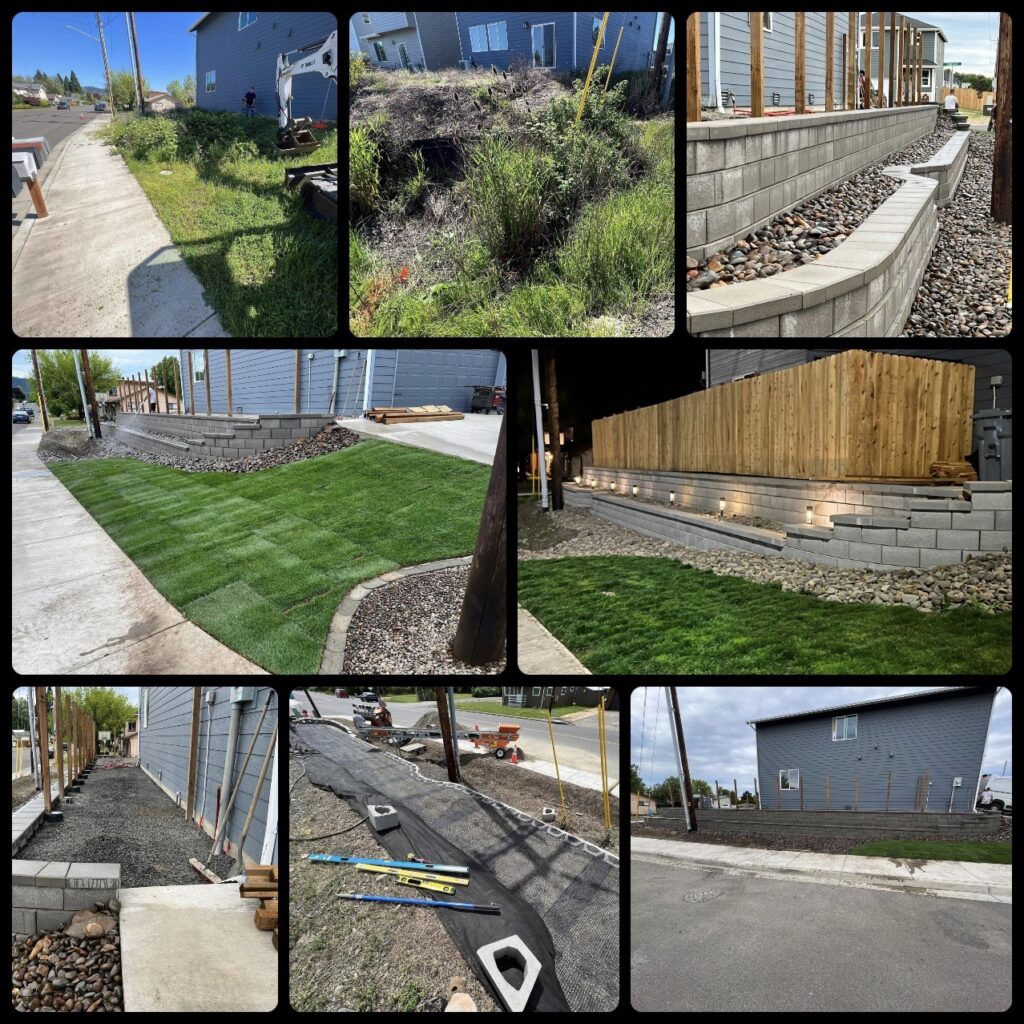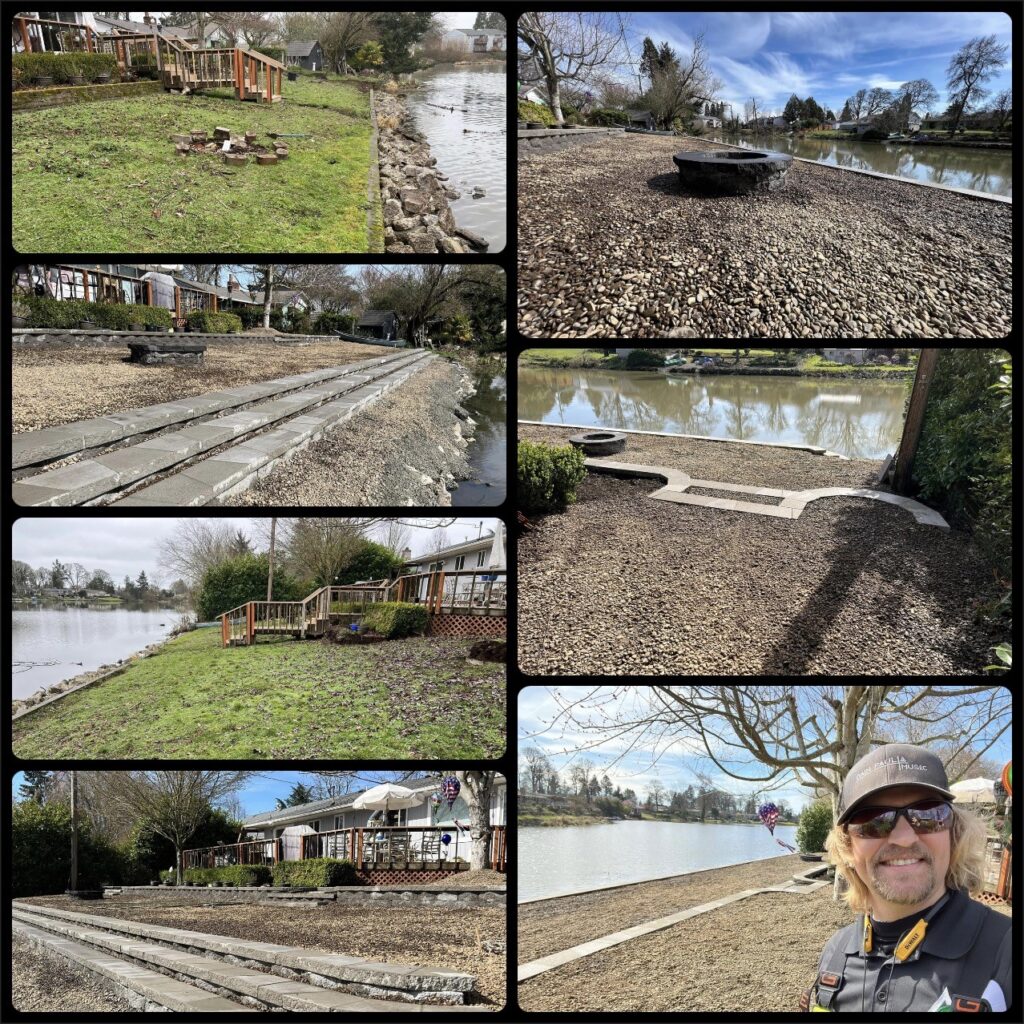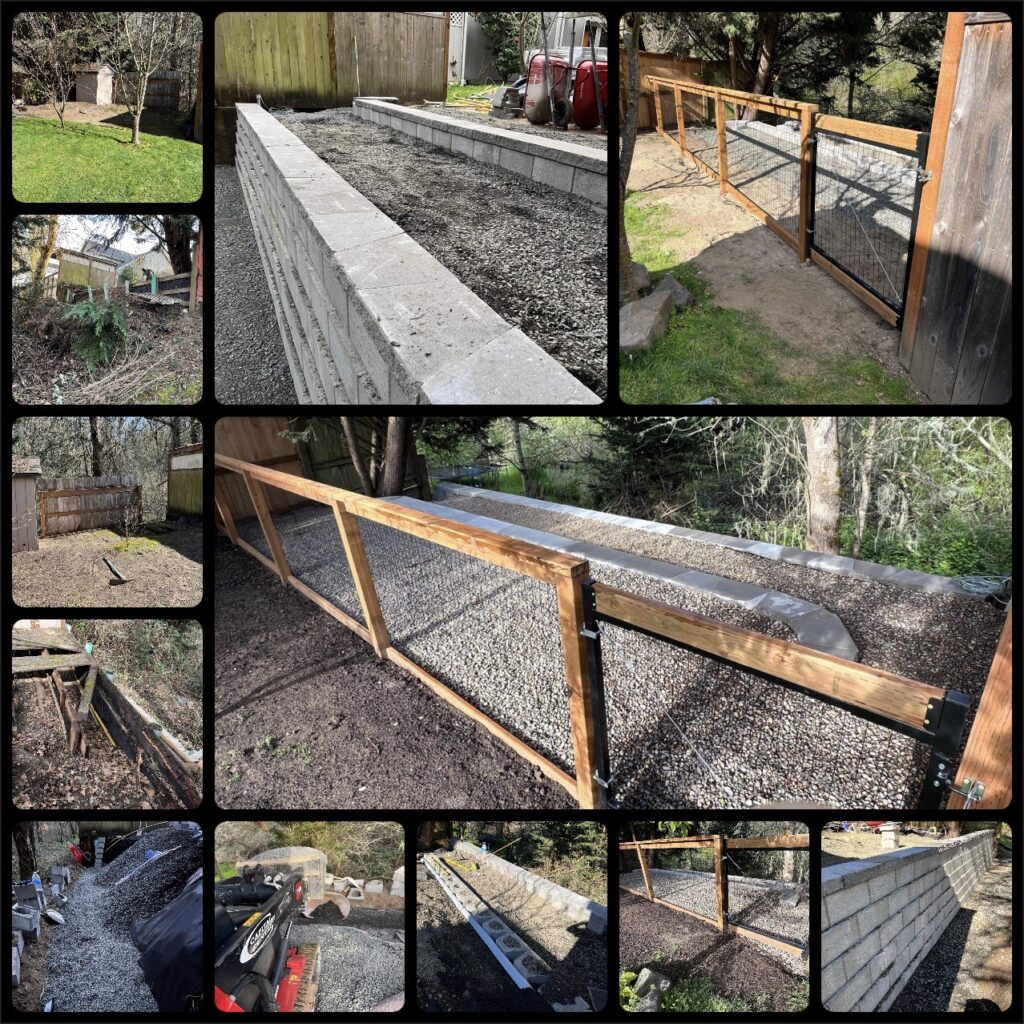Segmental Retaining Wall Installation
There are many reasons for constructing a segmental retaining wall, but the main reason is for land retention. When buildings or structures are built on land that has downward sloped terrain along the outer landscape. The sloped ground will eventually erode from the absence of land retention and become less stable for the structure it supports.

This causes the foundation of the structure to become weakened leading to structural damage. Retaining walls prevent erosion to the land by retaining the soil and allowing proper water drainage to bypass the wall. When installing retaining walls that face away from a structure and are downhill, the backfill extends the usable landscape space by leveling.
This serves as another primary reason for using retaining walls which is to extend the usable landscape. When land slopes, the only way to level the ground to make it usable is to install a retaining wall or set of retaining walls that match the total height of the slope.
Therefore, if the rise or total height of the difference in elevation is 20ft. Then there are two options for extending the land. We can use a licensed engineering company to develop blueprints for us to follow and build.
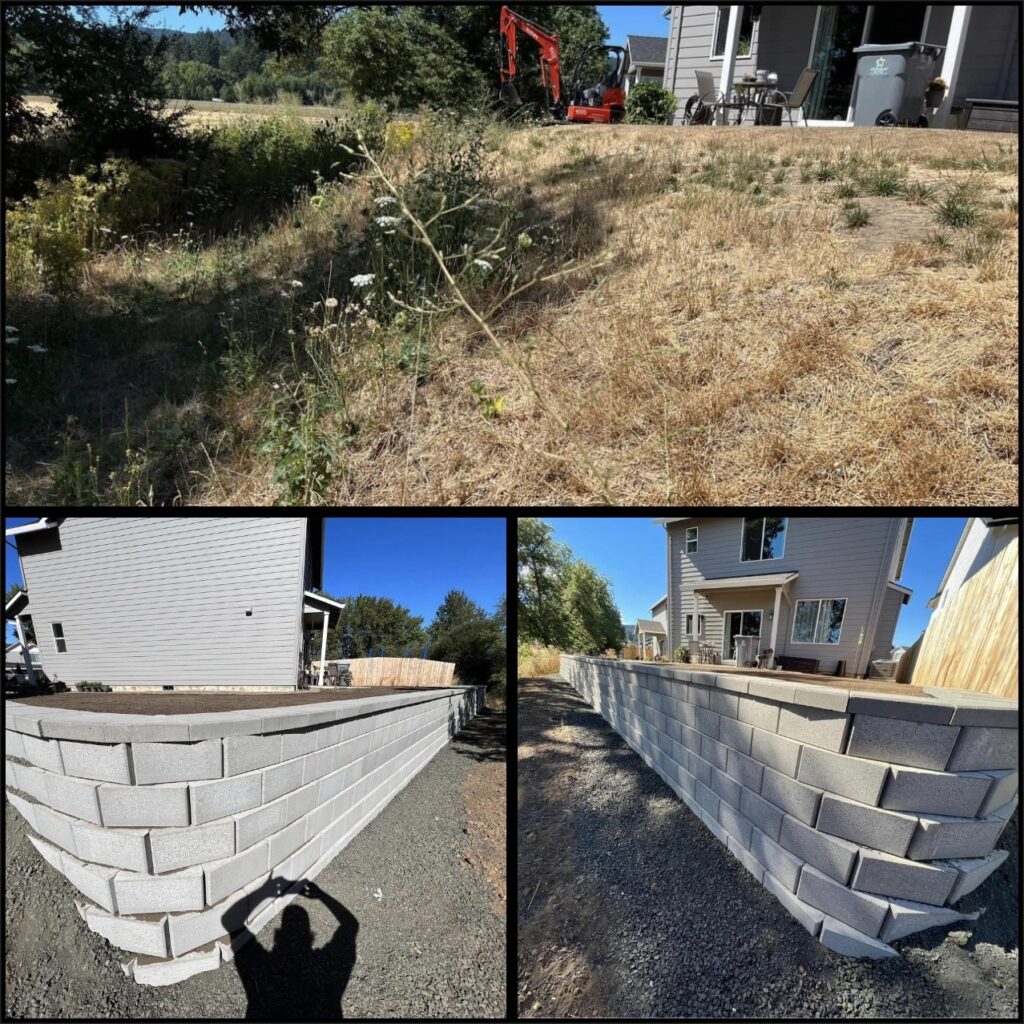
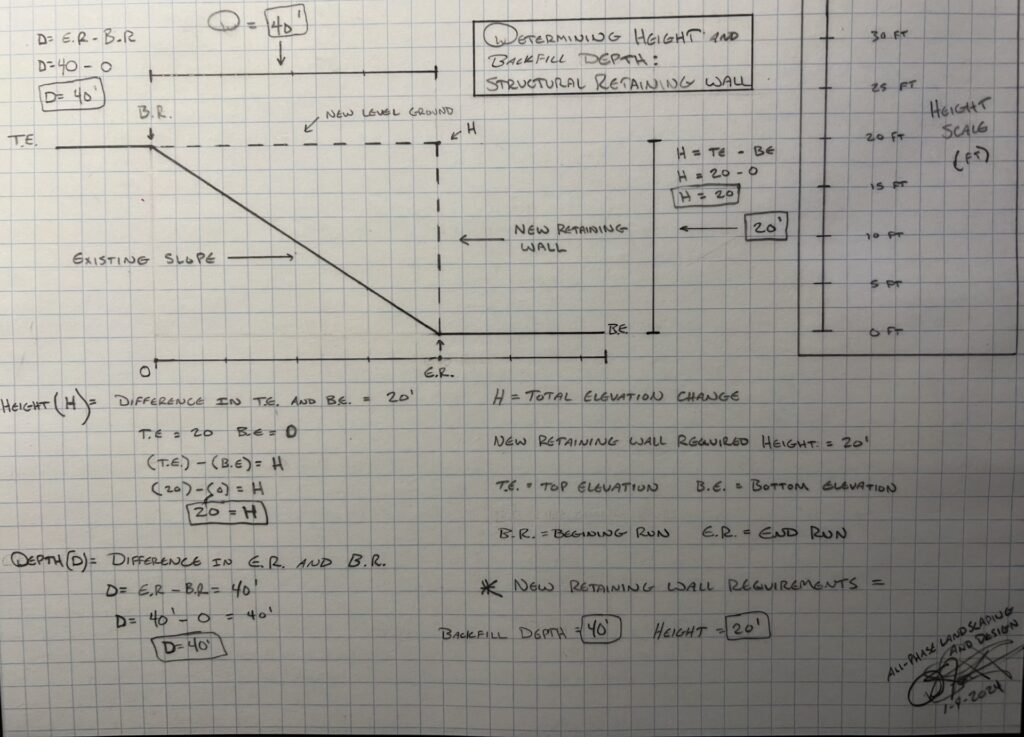
The other option is to build a series of retaining walls in which the total height of all walls combined equals the difference in elevation. This is called slope terracing or tiering.
Terraced Segmental Retaining Wall Installation
This is where we calculate and take the total height needed to transition from the top to the bottom elevation. Then we divide the total height by the wall maximum. This will determine the number of walls needed to satisfy the maximum demands. We will then calculate the distance needed for the structures to be structurally independent from each other. Eliminating load bearing surcharges on the lower walls by proper placement of the upper walls.

During our site analysis we will determine if a licensed engineer is required for the project. If we use a licensed engineering company for the project, we will work directly with them during the blueprint and building phases. This will ensure accuracy of the build and proper material is being used for required principles.
There are two main types of stone materials that we use for retaining walls. Segmental retaining wall blocks. These are concrete blocks designed specifically for retaining walls. These require proper drainage systems to be installed inside the backfill of the walls. The use of geotextiles, geogrid, piping and correct backfill materials are required for success with these types of walls.
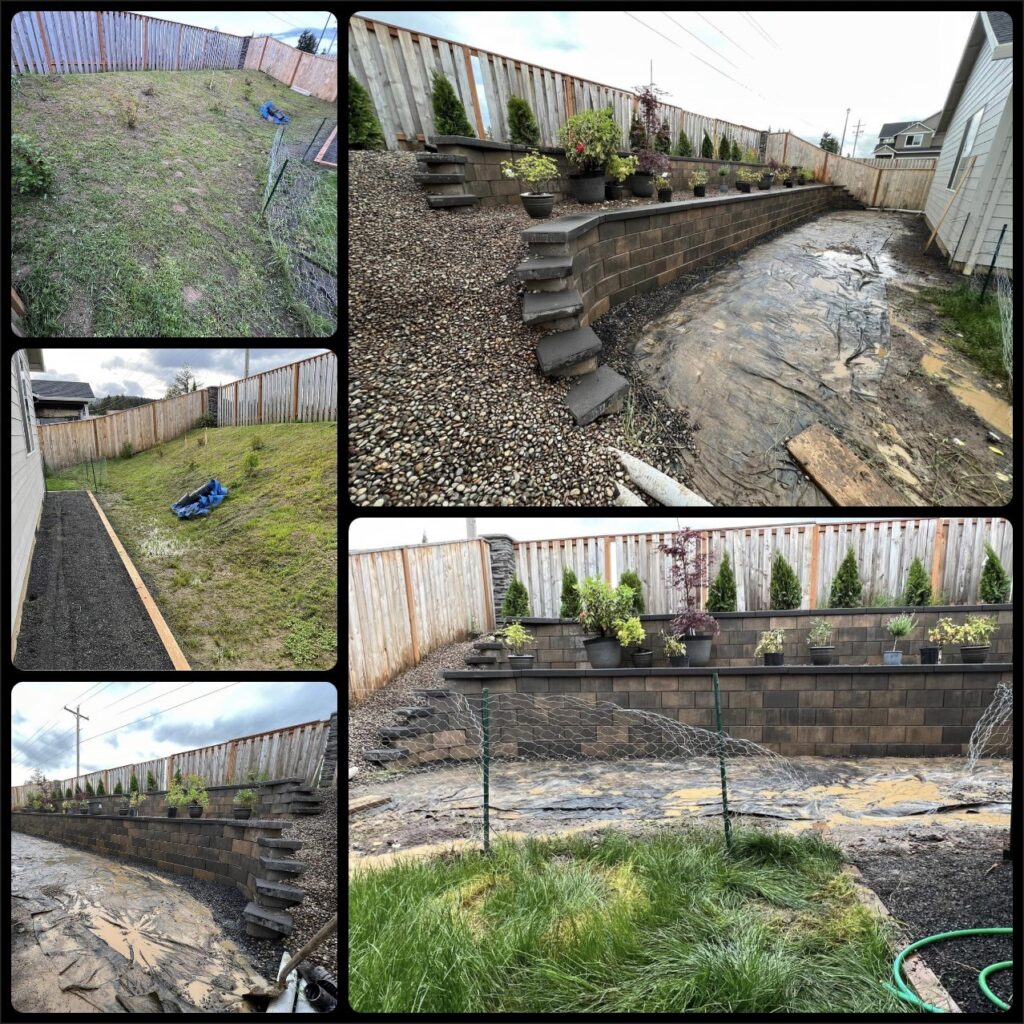
The other stone option is natural boulders. These are large natural boulders that are hydraulically installed together using drain gravel, and geotextiles. They are much less expensive to install and allow internally planting, such as moss and other ecofriendly groundcovers. These are a great option for function requirements for foundational landscaping and budgeting restrictions.
